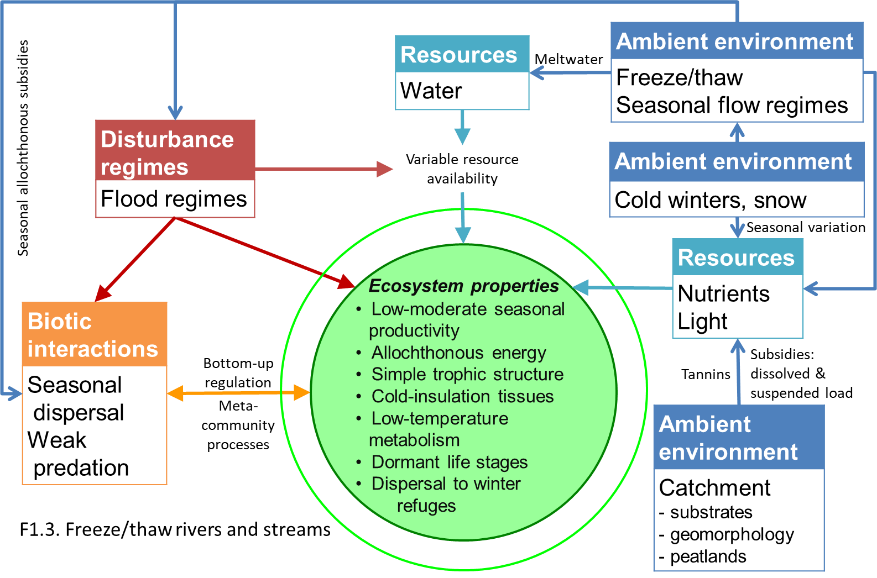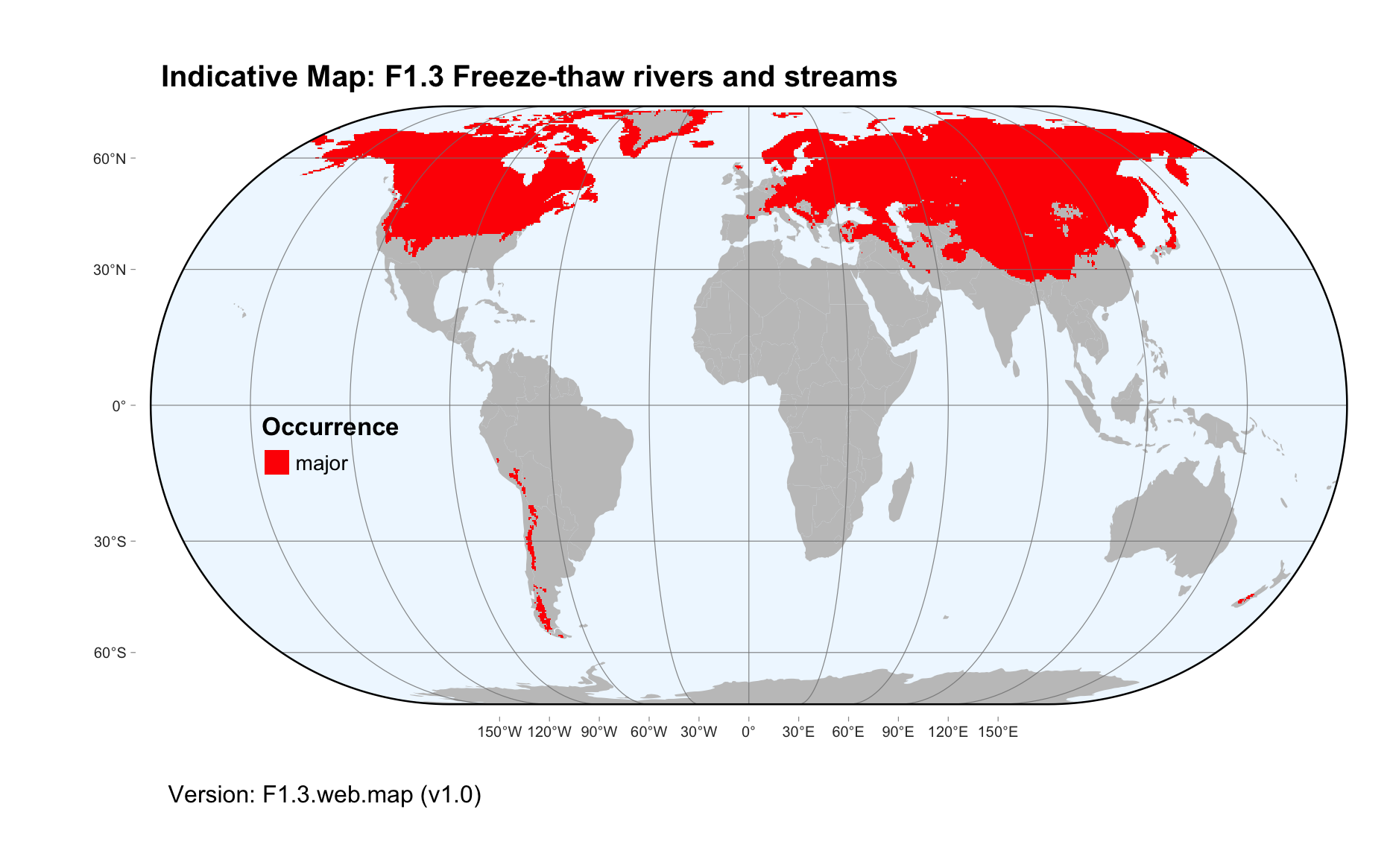Global ecosystem typology
Alternative site for the Global ecosystem typology with additional information for ecosystem profiles and indicative maps.
This site is maintained by jrfep
F1.3 Freeze-thaw rivers and streams
Biome: F1. Rivers and streams biome
Contributors:
(texts)
In cold climates at high latitudes or altitudes, the surfaces of both small streams and large rivers freeze in winter. In winter, the layer of surface ice reduces nutrient inputs and light penetration, limiting the productivity of these ecosystems and the diversity of their biota. In spring, meltwaters transport increased organic matter and nutrients, producing seasonal peaks in abundance of algae and phytoplankton. Animals, such as fish and beavers, tolerate near-freezing water temperatures, while a range of invertebrates and other vertebrates come to forage from spring to autumn.
Key Features
Cold-climate streams with seasonally frozen surface water and variable melt flows and aquatic biota with cold-resistance and/or seasonal dormancy.
Overview of distribution
High latitudes and/or high mountains, especially boreal regions.
Profile versions
- v1.0 (2020-01-20): RT Kingsford; DA Keith
- v2.0 (2020-06-24): RT Kingsford; PS Giller; DA Keith
- v2.01 ():
- v2.1 (2022-04-06): RT Kingsford; PS Giller; DA Keith Full profile available at official site
Main references
Selected references for this functional group:
Guo LD, Cai YH, Belzile C, Macdonald RW (2012) Sources and export fluxes of inorganic and organic carbon and nutrient species from the seasonally ice-covered Yukon River Biogeochemistry 107: 187-206 DOI:10.1007/s10533-010-9545-z
Olsson TI (1981) Overwintering of benthic macroinvertebrates in ice and frozen sediment in a North Swedish river Ecography 4: 161-166 DOI:10.1111/j.1600-0587.1981.tb00993.x
Diagrammatic assembly model

Maps
Maps are indicative of global distribution patterns are not intended to represent fine-scale patterns. The maps show areas of the world containing major (coloured red) or minor occurrences (coloured yellow) of each ecosystem functional group. See general notes on maps.
There are 2 alternative versions of the indicative map for this functional group, please compare description and sources below.
F1.3.IM.grid_v1.0
Datasets
- GloRIC-1.0
- FEOW-2008
Map references
Ouellet Dallaire, C., Lehner, B., Sayre, R., Thieme, M. (2018): A multidisciplinary framework to derive global river reach classifications at high spatial resolution. Environmental Research Letters 14: 024003. DOI: 10.1088/1748-9326/aad8e9
Abell R, Thieme ML, Revenga C, Bryer M, Kottelat M, Bogutskaya N, Coad B, Mandrak N, Contreras Balderas S, Bussing W, Stiassny MLJ, Skelton P, Allen GR, Unmack P, Naseka A, Ng R, Sindorf N, Robertson J, Armijo E, Higgins JV, Heibel TJ, Wikramanayake E, Olson D, López HL, Reis RE, Lundberg JG, Sabaj Pérez MH, Petry P (2008) Freshwater ecoregions of the world: A new map of biogeographic units for freshwater biodiversity conservation, BioScience 58: 403–414. DOI:10.1641/B580507
F1.3.web.map_v1.0

Datasets
- GloRIC-1.0
Map references
Ouellet Dallaire, C., Lehner, B., Sayre, R., Thieme, M. (2018): A multidisciplinary framework to derive global river reach classifications at high spatial resolution. Environmental Research Letters 14: 024003. DOI: 10.1088/1748-9326/aad8e9
Check: the Glossary / Profile structure / the public document